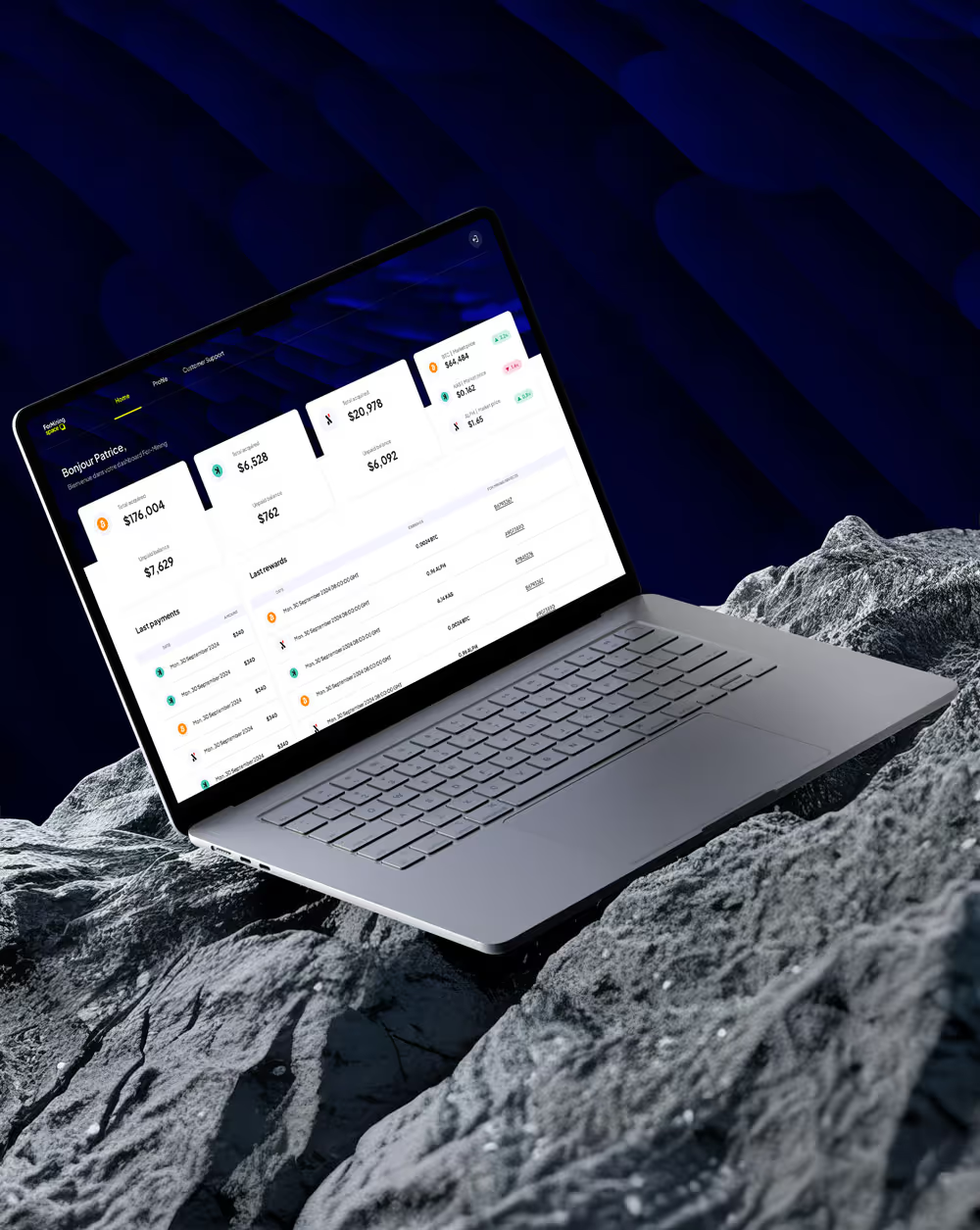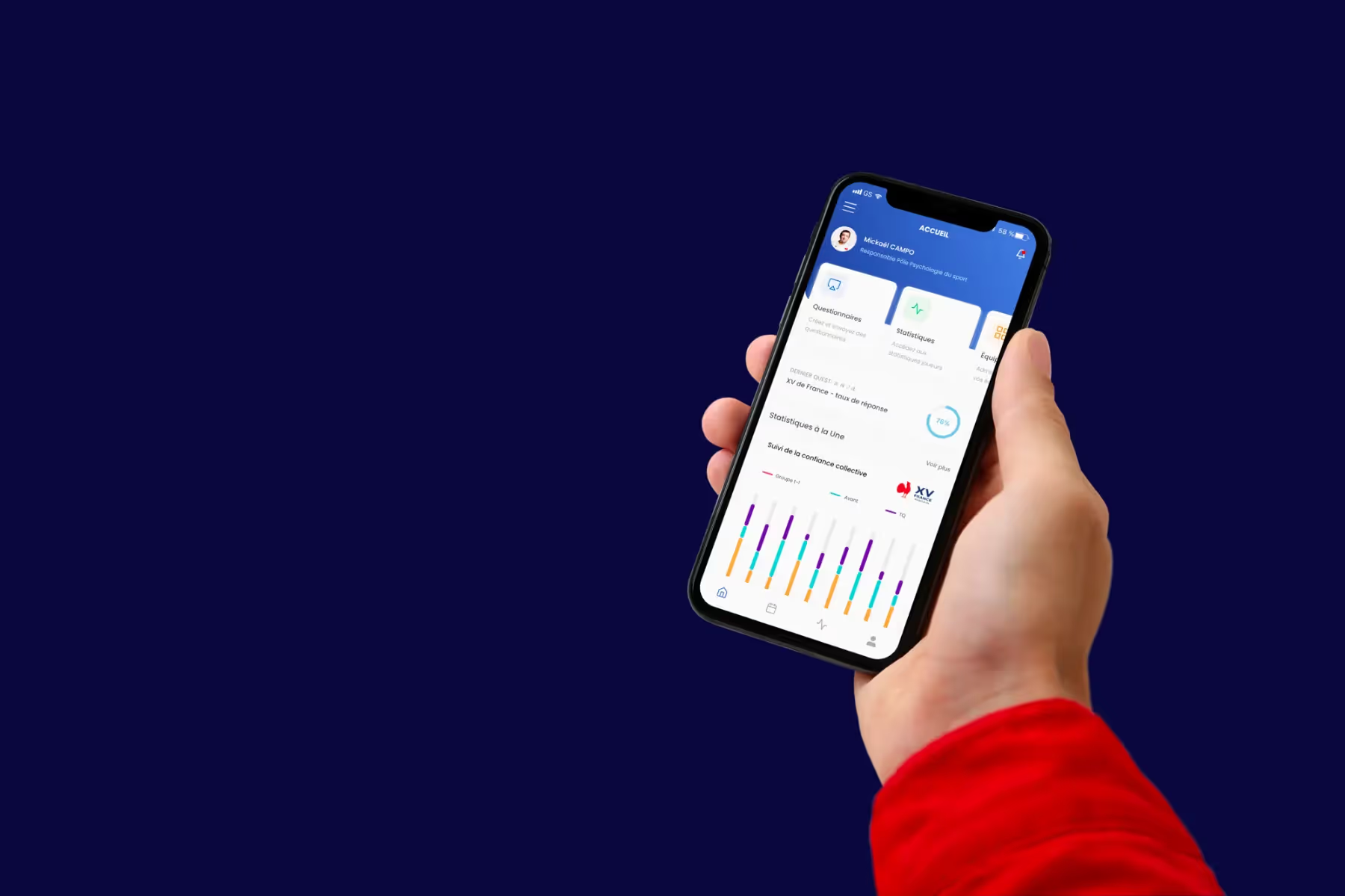
Les meilleurs outils de visualisation des données en 2025 (gratuits et open source)
La datavisualisation en 2025 — là où les choses deviennent vraiment concrètes
Soyons honnêtes : la visualisation de données, ce n’est plus ce que c’était.
Il y a encore quelques années, tout tournait autour de tableaux de bord impeccables projetés sur grand écran pendant les réunions.
Une série de graphiques bien propres, un camembert que quelqu’un allait forcément mal interpréter, et une palette de couleurs censée rendre les chiffres “plus parlants”.
Mais aujourd’hui ?
On est passé à autre chose.
La visualisation de données (ou dataviz, si on veut faire court) ne consiste plus simplement à montrer des données.
C’est une manière de comprendre, de dialoguer avec elles… et même de les laisser répondre.
C’est ce moment où vous ne faites plus que regarder vos indicateurs :
vous discutez littéralement avec votre tableau de bord.
Vous demandez :
“Tiens, pourquoi cette baisse la semaine dernière ?”
Et le système vous répond :
“On dirait que le taux de désabonnement de votre segment européen a grimpé de 12 %. Vous voulez voir les détails ?”
Voilà où on en est, en 2025.
L’IA s’est invitée discrètement dans le monde de la dataviz, et soudain, les outils que l’on croyait connaître ont pris une tout autre dimension.
Ils sont plus interactifs.
Plus intuitifs.
Et, soyons honnêtes, beaucoup plus fun à utiliser.
Mais avant de plonger dans les outils eux-mêmes, prenons un pas de recul.
Regardons les grandes tendances, celles qui redéfinissent notre manière de voir, de lire et surtout d’interpréter les données.
Les grandes tendances de la datavisualisation en 2025
1. Des insights guidés par l’IA (au-delà de l’automatisation)
Commençons par l’évidence.
L’intelligence artificielle ne se contente plus d’aider à créer des visualisations plus vite, elle transforme carrément ce qu’on voit à l’intérieur.
Les outils d’aujourd’hui repèrent les anomalies, suggèrent de meilleurs formats, et peuvent même expliquer les données directement dans un langage clair (oui, même en français).
C’est un peu comme si un petit analyste invisible vous soufflait à l’oreille :
“Ce pic n’est pas un hasard… jette un œil au timing de ta campagne.”
Ce n’est pas juste pratique.
C’est un changement de paradigme.
2. La visualisation conversationnelle
Vous vous souvenez du temps où les tableaux de bord étaient figés ?
Il fallait cliquer sur des filtres, attendre que les graphiques se rechargent, puis essayer tant bien que mal d’en tirer du sens.
Aujourd’hui, les choses ont changé. Vous pouvez désormais discuter avec vos données. Littéralement.
Vous saisissez ou dites simplement :
« Montrez-moi la croissance du chiffre d’affaires par région pour le deuxième trimestre »
et le tableau de bord se construit automatiquement sous vos yeux.
Ce n’est pas de la science-fiction, c’est exactement la direction que prennent des outils comme Streamlit, Dash ou même Tableau avec leurs nouvelles fonctionnalités.
Le plus intéressant, c’est que la dataviz devient enfin accessible.
Naturelle.
Intuitive, même pour celles et ceux qui n’ont jamais ouvert un tableur de leur vie.
C’est une petite révolution : la donnée cesse d’être un objet technique pour devenir un partenaire de conversation.
3. L'essor de la visualisation des « petites données »
Pendant des années, tout le monde ne parlait que de Big Data.
Mais la vraie révolution, en 2025, vient souvent des petites données (ou small data), plus ciblées, plus concrètes, plus humaines.
Des micro-dashboards conçus pour un artisan, une PME, un chef de projet ou un prof.
Des visualisations modestes, mais qui parlent à ceux qui les utilisent.
Un peu comme le mouvement slow food… mais pour la donnée.
On réalise peu à peu qu’il n’est pas nécessaire d’avoir des montagnes de chiffres pour avoir de la valeur.
Ce qui compte, c’est que l’information soit juste, pertinente et utile.

4. Le retour de l'esthétique
Le design épuré n’est plus une option.
Les utilisateurs s’attendent désormais à ce que les visualisations soient non seulement fonctionnelles, mais aussi belles.
Des dégradés subtils, une typographie soignée et des parcours narratifs bien pensés redéfinissent aujourd’hui ce que signifie être « professionnel » dans le domaine de la donnée.
Ce n’est pas une question de vanité, mais de clarté.
Parce que lorsque quelque chose semble intuitif, il devient plus facile à comprendre.
Ces évolutions sont les vents qui poussent les voiles de la visualisation de données moderne.
Elles influencent la façon dont les équipes, qu’il s’agisse de startups ou d’organisations publiques, transforment leurs chiffres en histoires et leurs histoires en décisions.
Les meilleurs outils de datavisualisation open source à connaître en 2025
Soyons réalistes : choisir le bon outil de dataviz peut vite devenir épuisant.
On commence avec de bonnes intentions :
« Il me faut juste quelque chose de simple pour afficher mes données. »
Et trois heures plus tard, vous avez 27 onglets ouverts, à comparer les frameworks, les licences et les étoiles sur GitHub, en vous demandant si vous n’auriez pas mieux fait de rester sur Excel.
Rassurez-vous, tout le monde est déjà passé par là.
Alors simplifions un peu les choses.
Voici les outils qui fonctionnent vraiment en 2025 : puissants, modernes et, surtout, agréables à utiliser.
Streamlit | Quand la simplicité rencontre la magie
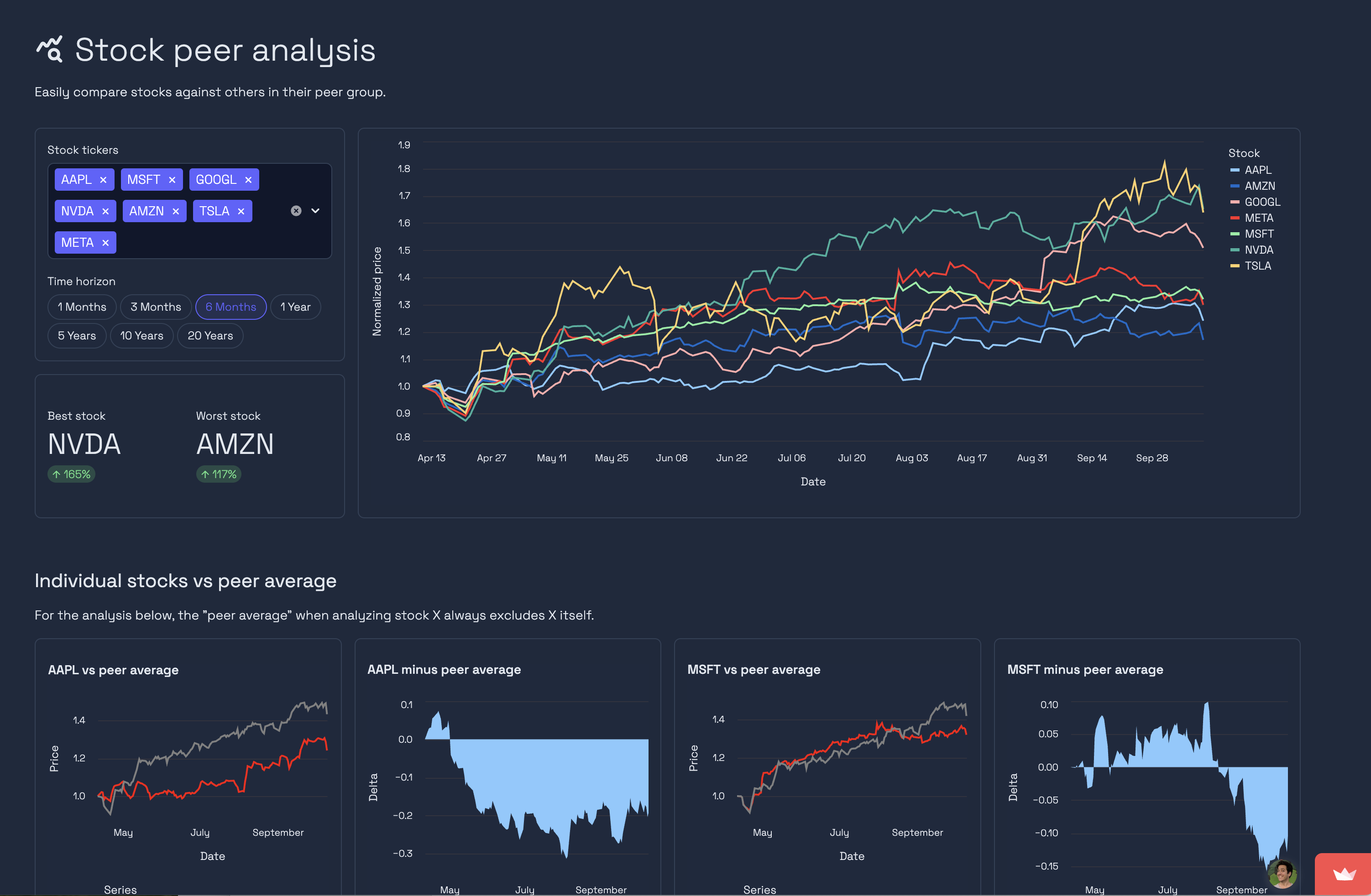
S’il existait un « point d’entrée » idéal dans le monde de la datavisualisation, ce serait sans doute Streamlit.
Vous écrivez quelques lignes de Python, vraiment juste quelques-unes, et soudain vous avez une application web fonctionnelle.
Des graphiques interactifs, des curseurs, des filtres, des assistants IA. Tout tourne directement dans votre navigateur, sans friction.
Ce que les utilisateurs apprécient dans Streamlit, c’est sa dimension humaine.
Vous n’avez pas besoin de vous battre avec du CSS ou de configurer un environnement front-end.
Vous vous concentrez sur les données, et Streamlit s’occupe du reste.
En 2025, l’outil passe un cap.
L’intégration de l’intelligence artificielle générative permet à votre application d’expliquer ses visualisations, de résumer les informations clés, et même de générer de nouveaux graphiques à la demande.
C’est de la narration de données sans les heures passées à peaufiner des diapositives.
>>> Lien vers le site web de Streamlit
Dash | Le choix de l'architecte
.png)
Si Streamlit est fait pour celles et ceux qui aiment construire vite, Dash s’adresse plutôt à ceux qui apprécient la structure.
Plotly Dash existe depuis un bon moment. C’est un outil solide, fiable, un peu comme cet ingénieur de votre équipe qui ne laisse jamais rien passer.
Il reste basé sur Python, mais il offre beaucoup plus de contrôle.
Vous pouvez personnaliser vos mises en page, connecter des flux de données en temps réel et créer des tableaux de bord complexes dignes d’une salle de contrôle d’entreprise technologique.
C’est plus technique, bien sûr, mais le compromis en vaut la peine : vous gagnez en puissance.
Et lorsque vous souhaitez que votre application de dataviz évolue ou gère des analyses lourdes, Dash reste une valeur sûre.
Petit conseil : il fonctionne parfaitement avec les graphiques Plotly, et rien que cela peut vous faire gagner des heures.
>>> Lien vers le site web de Dash
Panel | Le joyau caché
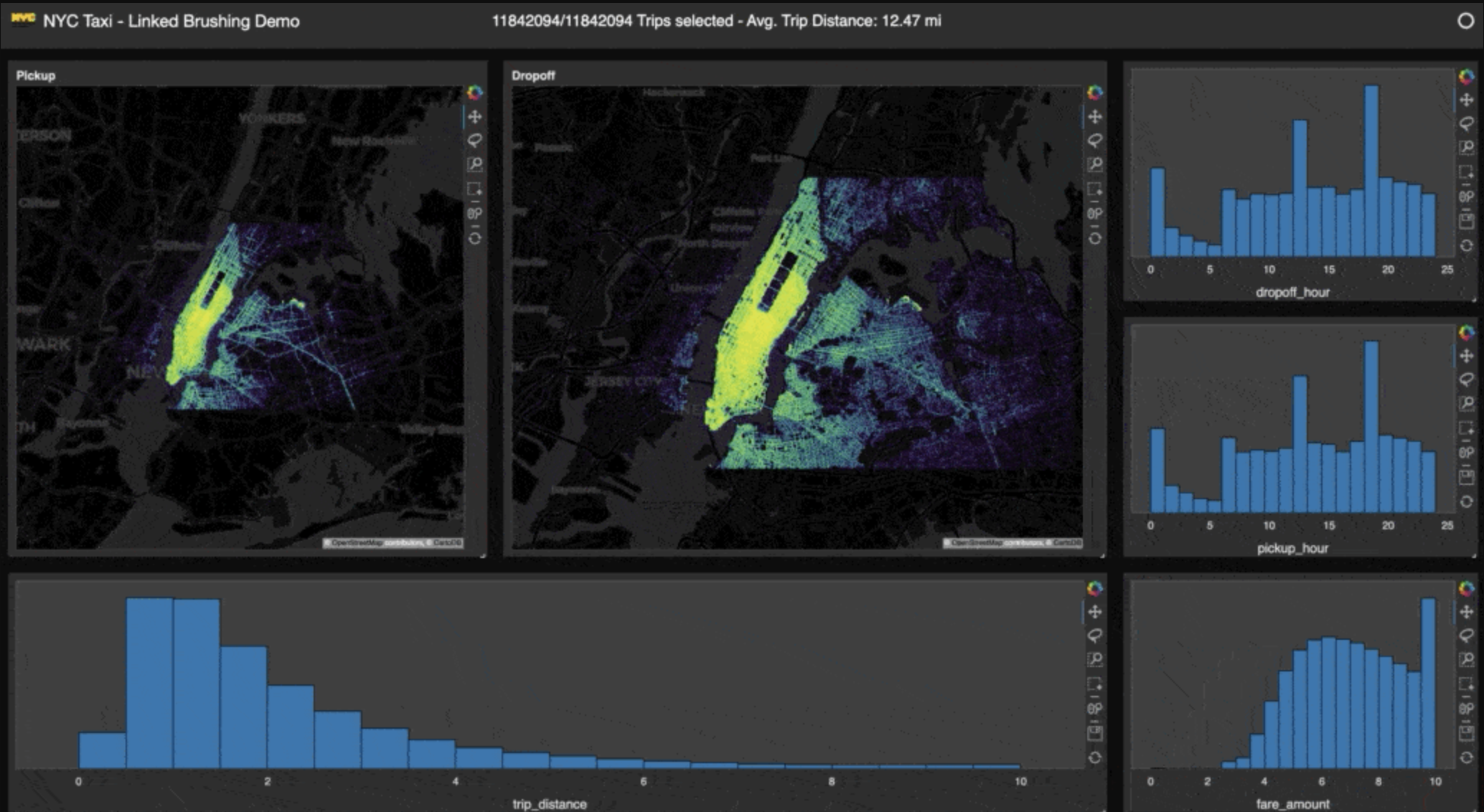
On parle rarement de Panel, et pourtant il mérite bien plus d’attention.
Construit sur l’écosystème HoloViz, il a été pensé par des spécialistes de la donnée, pour des spécialistes de la donnée.
Panel vous permet de transformer des notebooks ou des scripts en tableaux de bord interactifs en quelques minutes, sans sacrifier la flexibilité de Python.
Il est léger, agréable à manipuler, et ne donne jamais l’impression de travailler dans une usine à gaz.
Si vous aimez garder le contrôle sur ce qui se passe sous le capot, et que le bricolage ne vous effraie pas, Panel est un excellent compagnon.
>>> Lien vers le site web de Panel
Voilà | Le magicien du notebook
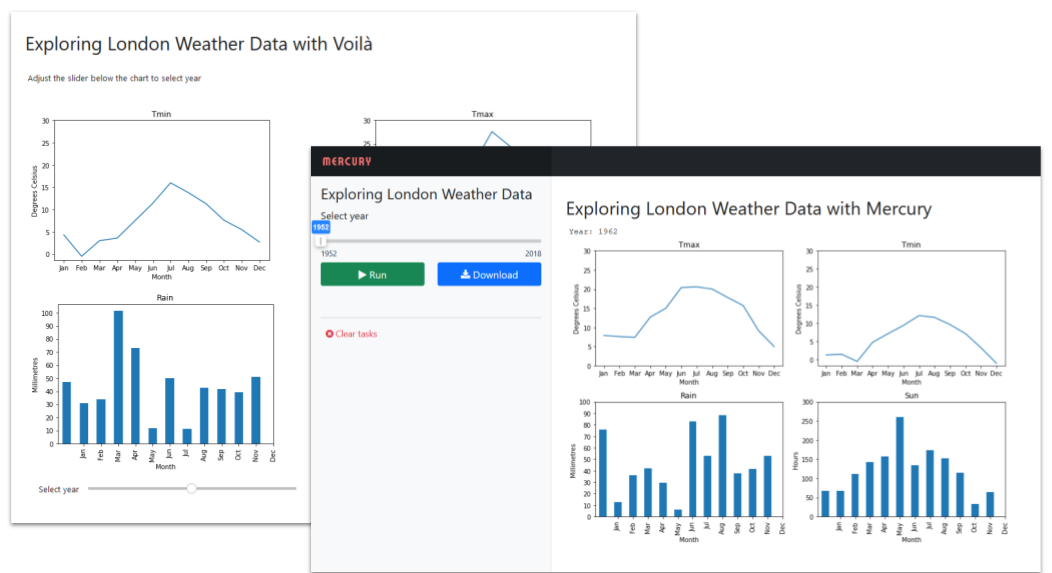
Vous avez déjà créé quelque chose de brillant dans Jupyter Notebook, mais au moment de le partager, cela ressemble toujours… à un notebook ?
Voilà résout ce problème.
Il prend votre travail existant et le transforme en une application web soignée, sans qu’il soit nécessaire d’ajouter une seule ligne de code.
Tous vos graphiques, widgets et éléments interactifs restent fonctionnels, tandis que la partie technique disparaît.
Si votre flux de travail repose déjà sur Jupyter, Voilà s’intègre naturellement, comme s’il avait toujours fait partie du décor.
>>> Lien vers le site web de Voilà
Shiny | Le chef-d'œuvre de la communauté R
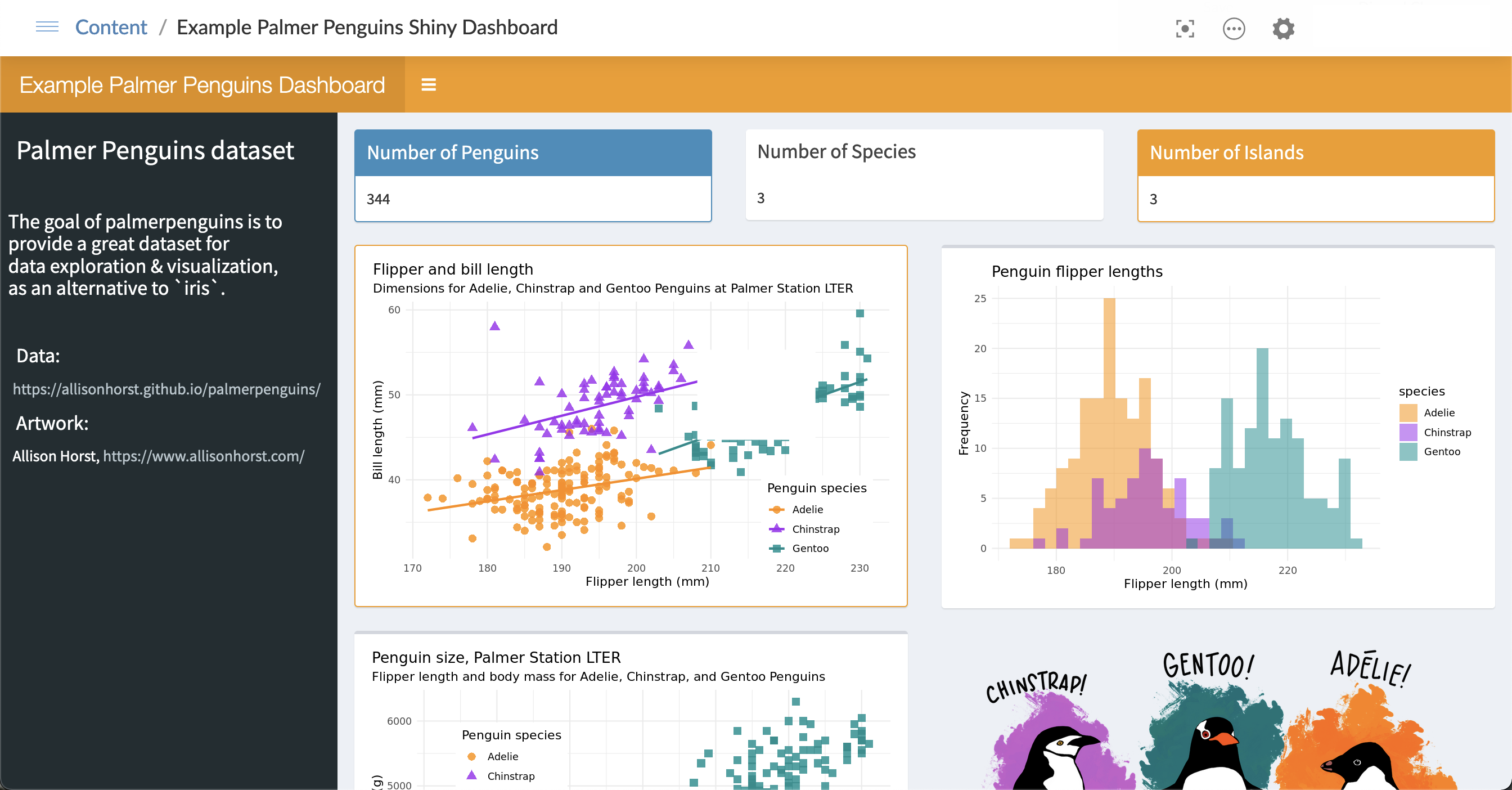
Il serait impossible de parler de datavisualisation sans évoquer la communauté R.
Depuis des années, Shiny est le framework de référence pour les utilisateurs de R, et ce n’est pas un hasard.
C’est un outil robuste, parfaitement documenté et étonnamment agréable à utiliser une fois qu’on l’a pris en main.
Même en 2025, Shiny reste la meilleure façon, pour les analystes et les scientifiques travaillant sous R, de partager des visualisations interactives sans changer d’environnement.
Et avec le nouveau projet Shiny for Python, il comble enfin le fossé entre les deux mondes.
>>> Lien vers le site de R Shiny
Voici la vérité : aucun de ces outils n’est « meilleur » que les autres.
Ils répondent simplement à des besoins différents.
Streamlit est idéal pour les prototypes rapides et esthétiques.
Dash convient parfaitement aux tableaux de bord personnalisables et évolutifs.
Panel et Voilà excellent là où les notebooks rencontrent l’interactivité.
Et Shiny reste le cœur battant de l’écosystème R.
Quel que soit votre choix, souvenez-vous de ceci : la visualisation des données ne dépend pas de l’outil, mais de l’histoire que vous choisissez de raconter à travers vos données.
Des alternatives Freemium et SaaS qui méritent d’être explorées
Soyons honnêtes un instant : tout le monde n’a pas envie de plonger dans du code.
Parfois, vous voulez simplement glisser, déposer et passer à autre chose.
Et c’est très bien.
Car si les outils open source sont remarquables en matière de flexibilité et de transparence, il y a quelque chose de rassurant dans une plateforme qui fonctionne simplement.
Vous vous connectez, vous importez vos données, et en quelques minutes, vous obtenez un tableau de bord beau, clair et interactif à montrer au monde entier (ou à votre manager, qui appelle encore ça un « PowerPoint »).
Voyons donc les principaux acteurs : les solutions freemium et SaaS qui continueront à façonner la manière dont les entreprises visualisent et partagent leurs données en 2025.
Power BI | L'arme pas si secrète de Microsoft
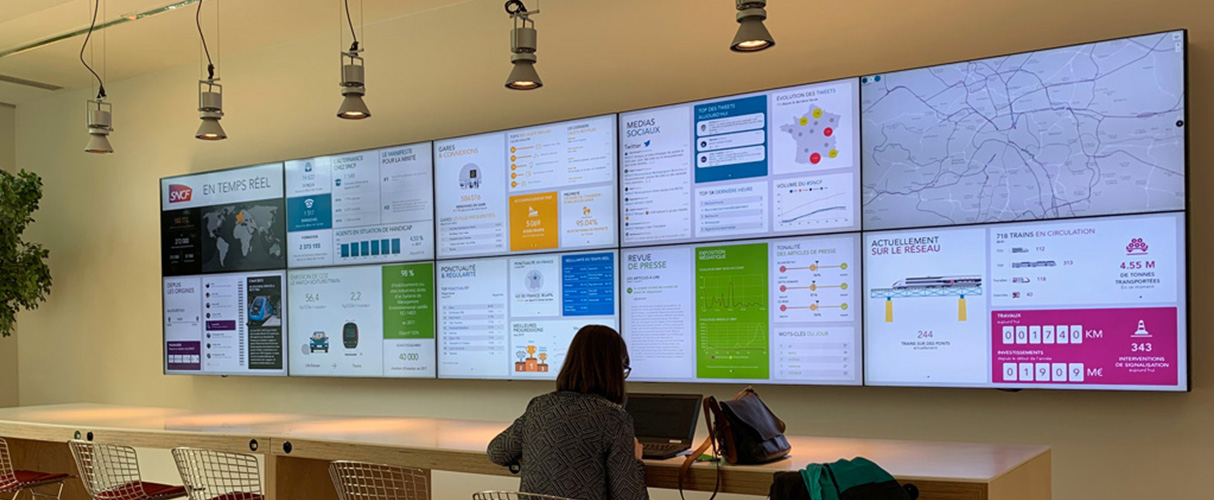
ous pouvez sourire en entendant le nom de Microsoft, mais Power BI est devenu la référence des entreprises, et ce n’est pas un hasard.
L’outil est rapide, s’intègre à tout (surtout à Excel, bien sûr) et se révèle étonnamment convivial une fois la phase de découverte passée.
La magie réside dans l’équilibre qu’il offre : suffisamment de liberté pour personnaliser, sans risquer de se perdre dans les options.
Et pour les petites équipes, la version gratuite est bien plus puissante qu’on ne le pense.
Power BI n’a peut-être pas le charme de l’open source, mais il coche les cases qui comptent le plus : fiabilité, partage facile et capacité à gérer les données imparfaites du monde réel sans broncher.
>>> Lien vers le site Web de Power BI
Tableau | L’artiste de la datavisualisation

Tableau a toujours eu ce petit côté Apple de la dataviz.
Élégant, soigné, presque trop beau parfois.
C’est un outil historique, et même si certains estiment qu’il perd du terrain face à des solutions plus récentes, il reste incomparable lorsqu’il s’agit de transformer des ensembles de données complexes en véritables histoires visuelles.
Des histoires qui captent l’attention et suscitent l’émotion.
Les analystes sensibles au design l’adorent, parce que Tableau redonne à la donnée un côté créatif.
Et en 2025, ses fonctionnalités d’analyse assistée par IA et ses recommandations intelligentes rendent l’outil encore plus accessible, même aux non-spécialistes.
Ce n’est pas le plus abordable, mais il reste magnifique, et parfois, c’est justement ce qui fait la différence.
>>> Lien vers le site Web de Tableau
Looker Studio (Google Data Studio) | Le héros du quotidien
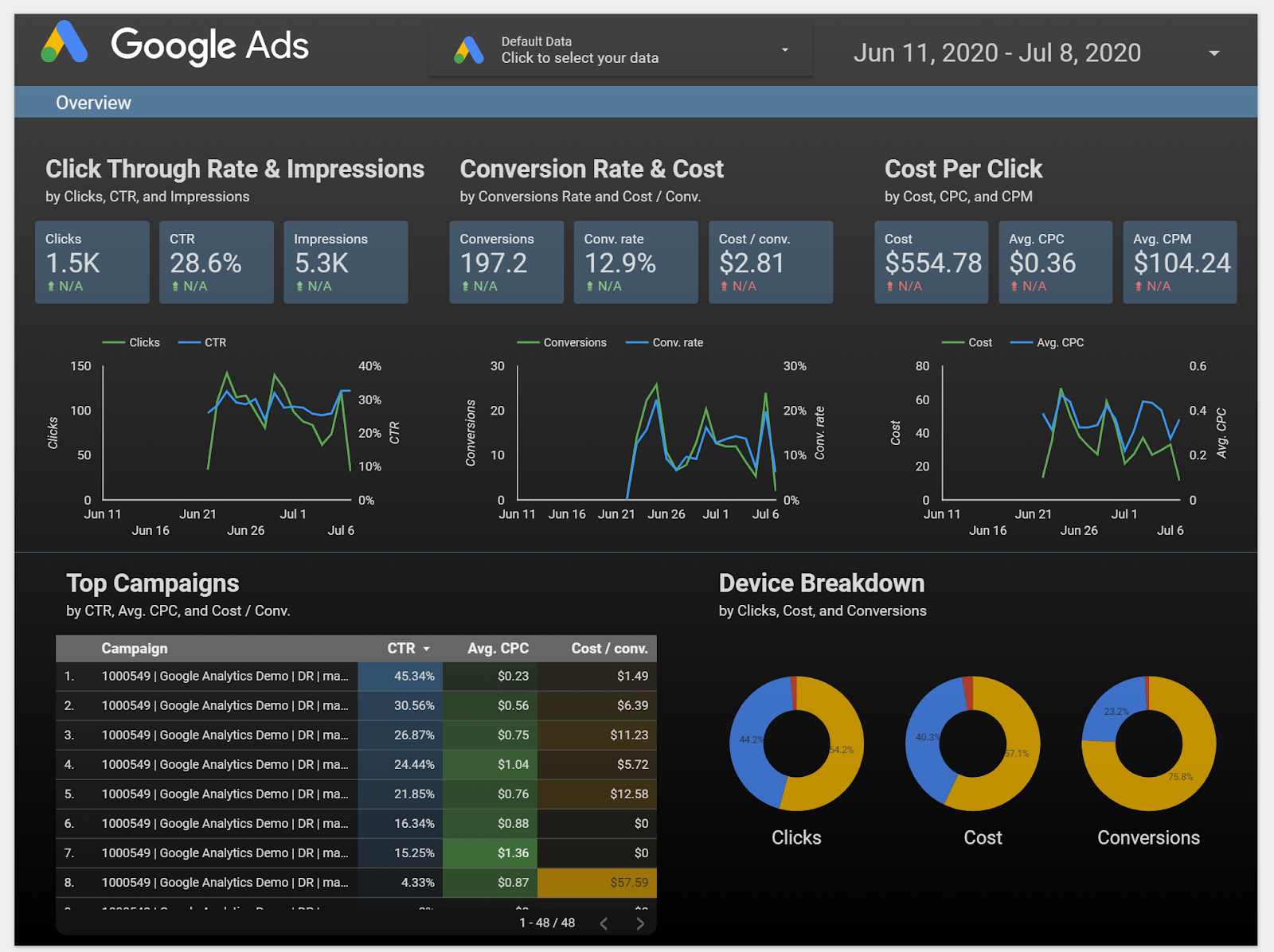
Si Power BI et Tableau sont des voitures haut de gamme, Looker Studio est ce bon vieux véhicule hybride qui démarre toujours, jour après jour.
Gratuit, entièrement en ligne et parfaitement intégré à Google Sheets, BigQuery et à d’autres services cloud, Looker Studio est devenu un standard pour les tableaux de bord simples et rapides à déployer.
Oui, il montre ses limites lorsqu’on cherche à aller plus loin, mais pour des besoins immédiats, il reste difficile à battre.
Google continue d’ailleurs de l’améliorer discrètement : nouveaux connecteurs, rafraîchissements plus fluides, interface plus épurée.
Ce n’est pas l’outil le plus sophistiqué, mais il fait le travail. Et dans la plupart des cas, c’est exactement ce qu’il faut.
>>> Lien vers le site web de Looker Studio
Zoho Analytics | Le polyvalent sous-estimé

Zoho est comme cet ami qui est doué en tout mais qui ne s'en vante jamais.
Zoho Analytics, c’est un peu cet ami talentueux qui ne se met jamais en avant.
Sa plateforme est puissante, abordable et étonnamment personnalisable.
Pour les petites et moyennes entreprises qui cherchent une solution complète sans les coûts d’un outil d’entreprise, Zoho mérite vraiment qu’on s’y attarde.
Vous pouvez automatiser les imports, créer vos rapports et même échanger avec vos données grâce à un assistant IA intégré.
Ce n’est pas l’outil le plus en vue, mais il est pratique, robuste, et cela compte beaucoup.
>>> Lien vers le site Web de Zoho Analytics
En fin de compte, que vous choisissiez l’open source ou le SaaS, tout se résume à une question d’équilibre entre contrôle et simplicité.
L’open source vous donne les clés de la voiture : vous pouvez régler le moteur, choisir la couleur, conduire où bon vous semble.
Le SaaS, lui, vous offre un chauffeur : trajet fluide, moins de tracas, mais moins de liberté pour improviser un détour.
Aucun des deux n’a tort.
Tout dépend simplement d’où vous voulez aller… et du plaisir que vous trouvez en route.
Comment choisir le bon outil (sans perdre la tête)
Soyons honnêtes : choisir un outil de visualisation de données, c’est un peu comme acheter un nouveau téléphone.
On commence plein d’enthousiasme, persuadé que cette fois, on va trouver le bon.
Et dix tableaux comparatifs plus tard, on se demande si les signaux de fumée n’étaient pas finalement une meilleure option.
Alors simplifions un peu les choses.
Oublions, le temps d’un instant, les fiches techniques et le jargon.
Voici une manière plus simple, plus humaine, de choisir son outil.
1. Commencez par votre objectif, pas par l’outil
Cherchez-vous à explorer vos données, ou à les présenter ?
Parce que ce sont deux approches très différentes.
L’exploration demande de la flexibilité : vous aurez besoin d’un outil qui vous permette d’expérimenter, de tester, de casser et de reconstruire.
La présentation, elle, demande de la stabilité : des mises en page soignées, des filtres clairs, quelque chose que votre public ne risque pas de casser par inadvertance.
Si vous explorez, privilégiez des outils open source comme Streamlit ou Dash.
Si vous présentez, optez plutôt pour des outils SaaS comme Power BI ou Looker Studio, qui vous feront gagner un temps précieux.
2. Connaissez votre zone de confort (et celle de votre équipe)
Si votre équipe parle Python, Streamlit ou Panel seront tout de suite familiers.
Mais si vos collaborateurs vivent dans Excel ou Google Sheets, leur imposer du code risque surtout de les décourager.
Il ne s’agit pas d’être « expert en technologie ».
L’essentiel est de rester dans un environnement où chacun se sent à l’aise, capable d’utiliser les données plutôt que de les redouter.
3. Réfléchissez à l’endroit où vivent vos données
Cela peut sembler évident, mais c’est souvent là que tout se complique.
Si vos données sont hébergées dans Google Cloud, choisissez des outils qui s’y connectent naturellement, comme Looker Studio.
Si elles sont stockées dans SQL, AWS ou sur vos propres serveurs, les frameworks open source vous offriront plus de liberté.
Et si vos données sont un peu éparpillées (ce qui arrive plus souvent qu’on ne l’admet), préférez un outil qui s’intègre facilement à tout.
Power BI, par exemple, sait se connecter à pratiquement n’importe quelle source.
4. Ne sous-estimez pas le design
Voici un petit secret : les gens font confiance aux jolis tableaux de bord.
Ce n’est pas toujours rationnel, mais c’est réel.
Quand une interface paraît organisée, on suppose que les données le sont aussi.
Choisissez donc un outil qui vous permette de créer quelque chose de propre, simple, et, pourquoi pas, un peu élégant.
Le but n’est pas de montrer toutes vos données, mais de donner envie de s’y plonger.
5. Essayez avant de vous engager
La plupart de ces outils proposent une version gratuite.
Profitez-en. Testez-les. Bousculez-les un peu. Voyez celui qui vous fait sourire plutôt que soupirer.
C’est comme une relation : vous saurez vite avec lequel vous avez envie de passer du temps.
La nouvelle génération de tableaux de bord : quand l’IA donne vie à la donnée
Si vous êtes arrivé jusqu’ici, vous l’avez sans doute ressenti aussi : ce changement discret, presque imperceptible, dans la manière dont nous percevons les données.
Les tableaux de bord ne sont plus de simples rapports.
Ils deviennent des outils vivants.
Ils réfléchissent avec nous, pas à notre place.
Chez 10h11, c’est exactement là que commence notre travail.
Nous n’avons jamais cherché à faire de la donnée pour la donnée. Tout le monde peut en collecter. Tout le monde peut créer un graphique.
Mais ce qui compte vraiment, ce qui a toujours compté, c’est ce qu’on en fait.

Nous créons des tableaux de bord qui respirent.
Des interfaces capables de faire émerger le bon signal quand tout devient confus.
Des outils qui rendent visibles des opérations complexes, des performances industrielles ou des impacts sociaux d’une manière qui inspire l’action plutôt que la confusion.
Car le vrai défi aujourd’hui n’est pas d’avoir trop peu de données, mais de les comprendre assez vite pour agir.
L’essor de l’intelligence artificielle ne change pas ce constat, il le renforce.
L’IA nous offre simplement de meilleurs leviers.
Elle nous permet de combiner l’intuition humaine et la puissance analytique des machines, pour concevoir des expériences plus naturelles, plus conversationnelles, presque humaines.
C’est ce que nous appelons la datavisualisation augmentée.
C’est le prochain chapitre pour 10h11 : unir le design, la narration et l’analyse pilotée par l’IA pour créer des tableaux de bord qui ne se contentent plus d’informer, mais qui engagent, surprennent et guident.
Qu’il s’agisse de prototypes créés avec Streamlit, de cockpits d’entreprise ou d’applications sur mesure qui écoutent et répondent, nous poursuivons la même ambition :
Transformer les chiffres en clarté.
Transformer la clarté en action.
Parce que la vraie valeur des données n’a jamais résidé dans les outils, mais dans les personnes qui les utilisent pour voir un peu plus loin qu’hier.


